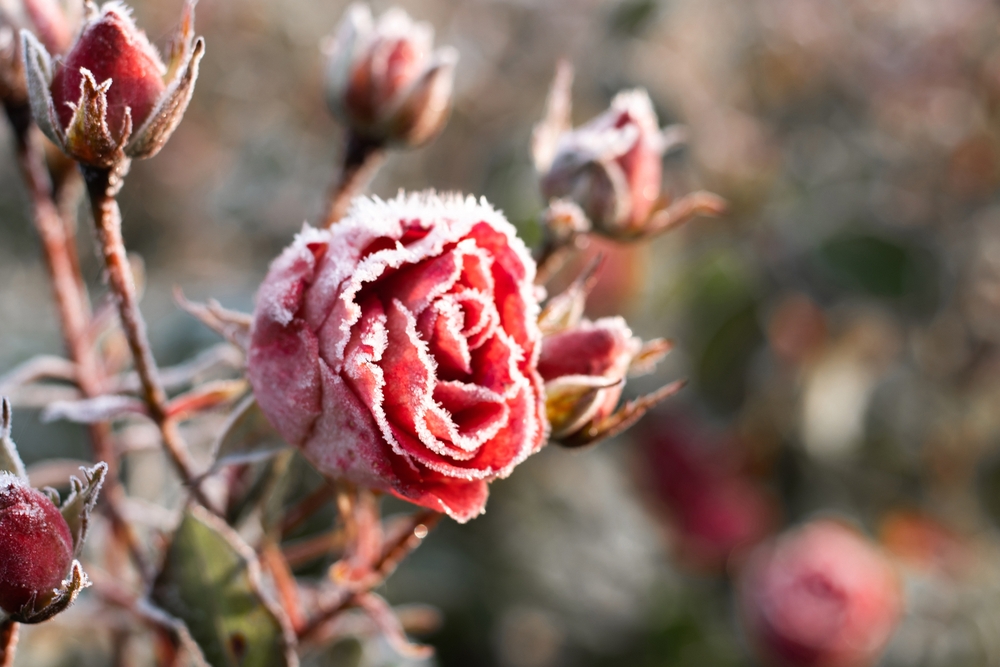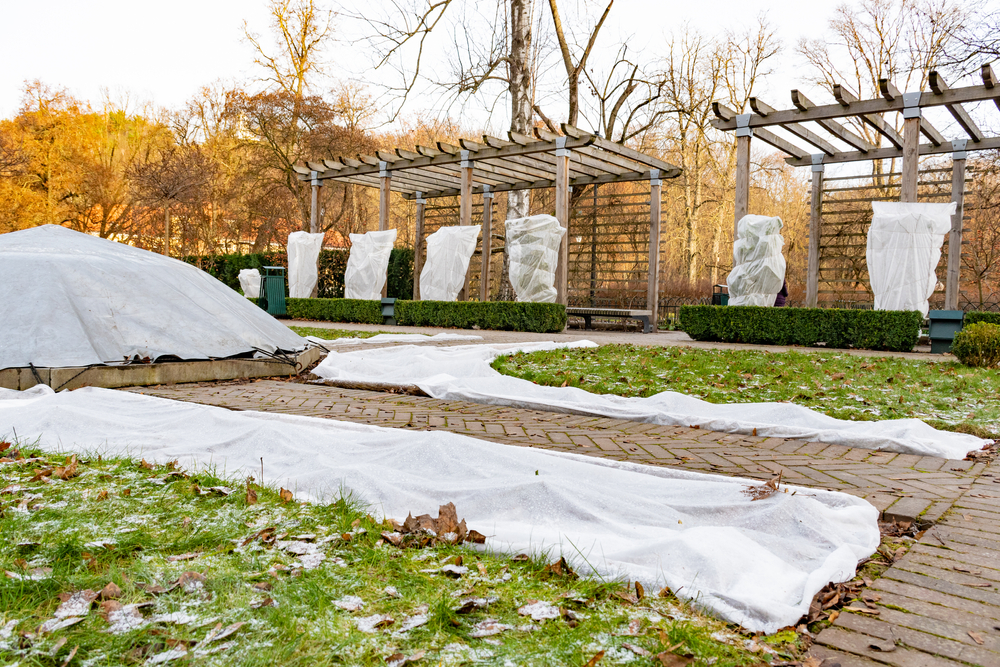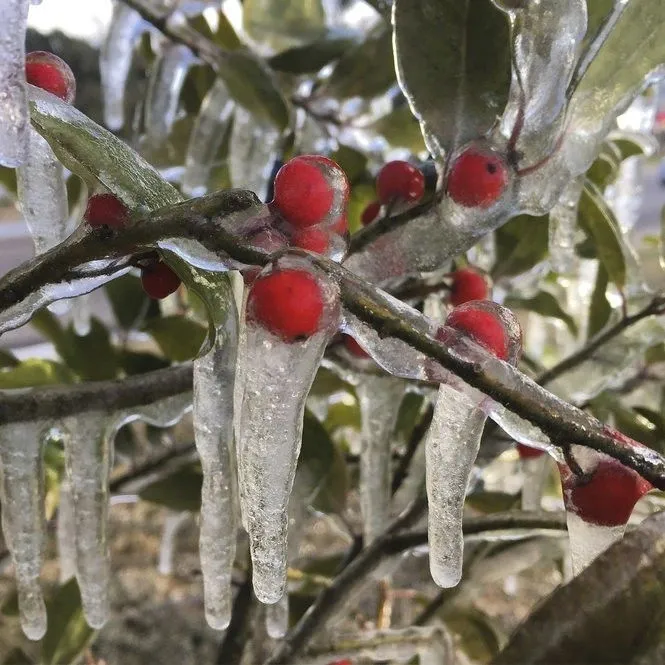After Freeze Care for Landscaping – Winter Maintenance Tips for Your Plants
After a freeze, it is important to assess the damage to your landscaping and take proper steps for care. Our comprehensive guide provides expert advice on post-freeze landscaping care, including assessing plant damage, pruning damaged foliage, providing supplemental water, and protecting vulnerable plants from future freezes. By following these guidelines, you can help rejuvenate your landscaping and promote its recovery.

The Impact of Freeze on Plants
When temperatures plummet and winter sets in, it’s essential to understand the potential impact of freezing conditions on your landscaping plants. Freezing temperatures can cause significant damage to plants, especially those that are not cold-hardy or properly protected.
Plants contain water within their cells, and when temperatures drop below freezing, this water can freeze and expand. As a result, the cell walls can rupture, leading to irreversible damage. Additionally, freezing temperatures can also disrupt the flow of water and nutrients within plants, affecting their overall health and survival.
Different plant species have varying tolerances to freezing temperatures. Some plants may survive mild frosts with only minimal damage, while others may be more susceptible to even slight drops in temperature. Understanding the specific cold-hardiness levels of your plants is crucial in determining their vulnerability to freezing conditions.
In addition to direct damage caused by low temperatures, freeze-thaw cycles can have a detrimental effect on plants. When frozen plants thaw too quickly, it can lead to further damage as ice crystals melt rapidly and disrupt plant tissues.
Furthermore, freezing temperatures combined with strong winds can exacerbate the effects on your plants. Wind chill factors can significantly lower temperatures perceived by the plants, making them even more susceptible to damage.
It’s important to note that the severity of the impact of a freeze on plants is influenced by various factors such as the duration and intensity of the freeze as well as the plant’s overall health and condition prior to the event. Well-maintained and healthy plants will generally have better resistance against freeze damage compared to weaker or stressed ones.
Deciphering Freeze Damage Symptoms
After experiencing freezing temperatures, it’s essential to assess your landscaping plants for any signs of freeze damage. Identifying these symptoms early on can help guide your winter maintenance efforts and potentially save your plants from further harm.
One common symptom of freeze damage is wilting or drooping foliage. Leaves that appear limp and discolored may indicate that the extreme cold has damaged the plant’s cell structure, hindering its ability to retain water properly.
For instance, if you have delicate flowering annuals in your garden, such as impatiens or begonias, they may show visible signs of freeze damage, with wilted stems or blackened leaves.
Another indicator is discoloration. Frostbite can cause leaves and stems to turn brown or black. The extent of the discoloration can vary depending on the severity of the freeze and the plant species.
Think of it like a bruise on human skin; it indicates tissue damage beneath the surface.
Additionally, freeze damage may manifest as visible lesions or split bark on trees and shrubs. These open wounds can leave plants vulnerable to pests and diseases, making it crucial to address them promptly.
To determine if there is still life left in a seemingly damaged plant, gently scrape some of the bark off with your fingernail. If you see green tissue underneath, there’s hope for recovery. However, if you find dry and brittle wood underneath, it likely indicates irreversible damage.
Post-Freeze Landscaping Care
After experiencing freezing temperatures, it is crucial to provide proper care for your landscaping to help it recover and thrive once spring arrives. Post-freeze landscaping care involves a combination of assessment, clean-up, and preventative measures to ensure the health and vitality of your plants. By taking the necessary steps, you can effectively mitigate the damage caused by freezing temperatures and set the stage for a successful regrowth season.
The first and most important step in post-freeze landscaping care is to assess the extent of the damage caused by the freeze. Take a careful look at your plants, trees, and shrubs to identify areas that have been affected. Look for signs such as wilted foliage, discoloration, or ice damage. It’s also essential to check the soil moisture levels to determine if any root damage has occurred.
Once you have identified the areas of damage, it’s time to proceed with clean-up. Trimming back damaged or dead branches is essential not only for aesthetic purposes but also for promoting new growth. Remove any fallen debris or excess mulch that may have accumulated during the freeze. Be cautious when removing damaged foliage, ensuring not to cause further harm to your plants.
To protect your landscaping from future freezes, implementing preventative measures is key. One effective method is applying a layer of mulch around the base of plants and trees. This helps insulate the soil and retain heat, keeping the roots protected during cold temperatures. Additionally, consider utilizing frost blankets or covers on delicate or vulnerable plants when freezing conditions are expected.
Taking these initial steps towards post-freeze care will lay a solid foundation for healing and revitalizing your landscape after enduring harsh winter conditions. However, specific plants may require additional attention and specialized techniques to recover fully.
Healing Freeze Affected Plants
Freezing temperatures can have a significant impact on different plant species, causing damage to leaves, stems, and even the root system. However, with proper care and attention, it is possible for freeze-affected plants to bounce back and regain their health.
Let’s say you have a beautiful Japanese maple tree that has suffered from frostbite due to an unexpected cold snap. The leaves have turned brown and appear lifeless. In this scenario, there are steps you can take to aid in the healing process.
Firstly, it’s crucial to refrain from removing any damaged foliage immediately after the freeze. While it may be tempting to prune away the brown and withered leaves, they actually act as protective layers against further damage. Leave them intact until after the last threat of freezing temperatures has passed in order to shield the new growth that will emerge.
Once you’re confident that freezing conditions are no longer a concern, carefully prune away the dead or damaged branches, making clean cuts just above a bud or branch junction. This will encourage new growth and shape the plant’s overall structure. After pruning, ensure your plant receives adequate water and nutrients to support its recovery process.
During the healing phase, pay extra attention to watering practices. Depending on your region’s climate and soil conditions, you may need to adjust your watering schedule accordingly. It’s important not to overwater as this can lead to root rot in plants already weakened by freezing temperatures. Monitor soil moisture levels and provide supplemental irrigation if necessary.
Remember that healing freeze-affected plants takes time and patience. Monitor their progress over several weeks or months as they gradually regenerate new foliage and regain strength. Providing ample sunlight exposure and maintaining a consistent fertilization routine can also contribute to their successful recovery.
Healing freeze-affected plants is like nurturing someone back to health after a severe illness. It requires patience, understanding, and the right balance of care to facilitate their healing journey.
With the appropriate post-freeze care and targeted healing techniques, your landscape will show remarkable resilience and regrowth in due time. By implementing these strategies, you are setting the stage for a vibrant and thriving outdoor space when the warmer seasons return.
Implementing Damage Control Measures
When a winter freeze strikes, it’s essential to take immediate action to minimize the potential damage to your landscape. Implementing damage control measures can help protect your plants and ensure their survival during and after freezing temperatures.
One crucial step is to cover vulnerable plants with protective materials, such as burlap or frost blankets. These barriers shield delicate foliage from direct contact with freezing air and provide insulation against temperature drops. Mulching around the base of plants with organic materials like straw or wood chips can also help regulate soil temperatures and protect roots.
Another damage control measure is watering your plants before an expected freeze. This might sound counterintuitive, but moist soil retains more heat than dry soil, providing some insulation for plant roots. However, be careful not to overwater, as waterlogged soil can cause its own problems.
Pruning damaged or dead branches is another critical aspect of damage control. Removing these compromised parts helps redirect the plant’s energy towards healthier growth and prevents disease or infection from spreading further. Additionally, it’s essential to clear debris and fallen leaves from the surface of beds to avoid potential rot or pest infestations.
In my experience as a landscaper, I once had a client who neglected to prune their trees before a freeze. The weight of ice accumulated on the branches caused significant damage, leading to broken limbs and even uprooted trees. Implementing proper pruning techniques beforehand could have prevented this outcome.
Taking proactive measures by applying anti-desiccant sprays can also be beneficial in protecting evergreen plants from excessive moisture loss during cold winter winds. These sprays create a thin waxy film on the leaves that acts as a barrier against drying winds.
Remember, each landscape is unique, so it’s important to assess the specific needs and vulnerabilities of your plants when implementing damage control measures.
After putting in place these initial precautions, it’s time to shift our attention to techniques that can help restore your landscape after a freeze.
- When dealing with a winter freeze, it is crucial to take immediate action to protect your landscape. Measures such as covering plants, mulching, watering, pruning, and applying anti-desiccant sprays are essential for minimizing damage. It is important to assess the specific needs of your plants and implement appropriate measures accordingly. After the freeze, focus on techniques to restore your landscape.
Techniques to Restore Landscape after Freeze
Once the winter freeze has passed and the temperatures start to rise, it’s crucial to assess the damage and take appropriate steps to restore your landscape. Here are some effective techniques for restoring your plants:
Firstly, remove any dead or damaged plant material carefully. This includes brown or blackened leaves, wilted stems, and branches that didn’t survive the freeze. By pruning these parts away, you encourage new growth and prevent potential diseases from spreading.
Secondly, consider providing additional moisture to the soil. A thorough watering can help rejuvenate plants by replenishing the moisture lost during freezing conditions. However, be mindful of overwatering as it can lead to root rot in poorly drained soil.
I once encountered a garden with frost-damaged plants where the homeowner mistakenly believed that watering excessively would revive them. Unfortunately, this resulted in root rot and further damage due to lack of drainage. It’s crucial to strike a balance between providing enough water for recovery without causing additional harm.
Applying a balanced fertilizer specifically formulated for plant recovery can also aid in restoring their health. The nutrients provided by fertilizers promote new growth and strengthen plants’ resilience against future stressors.
Additionally, consider adding a layer of fresh mulch around plant bases after the freeze has passed. This acts as protection against subsequent temperature fluctuations and helps retain moisture in the soil.
Lastly, support your plants’ recovery by monitoring their progress closely. Keep a keen eye out for signs of regrowth and identify any areas needing further attention or care. Be patient and allow sufficient time for your landscape to bounce back from the freeze event.

Frost Preparedness for Landscaping
As winter approaches, it’s crucial to take steps in preparing your landscaping for potential frost. Freezing temperatures can pose a threat to the health and vitality of your plants, so it’s essential to be proactive in protecting them. Let’s explore some practical tips and strategies for frost preparedness.
One of the key aspects of frost preparedness is understanding which plants are most susceptible to freezing temperatures. Tender plants such as tropical varieties or young seedlings are more vulnerable and require extra care. Identify these plants in your garden and prioritize their protection.
For instance, delicate flowers like roses or hibiscus may suffer severe damage if left exposed during freezing conditions. Taking preemptive measures to safeguard them can make all the difference in ensuring their survival.
Next, consider utilizing protective coverings like frost blankets or burlap wraps. These materials act as insulation, trapping heat around the plants and shielding them from the damaging effects of frost. Securely wrap or drape the coverings over the plants, ensuring they extend all the way to the ground to create a barrier against cold air.
| Type of Plant Protection | Effectiveness |
| Frost blankets or burlap wraps | Highly Effective |
| Mulching with straw or leaves | Moderately Effective |
| Watering before freeze | Limited Effectiveness |
Additionally, applying a layer of organic mulch around the base of your plants can provide an extra layer of insulation. Mulch acts as a barrier, retaining soil warmth and preventing rapid temperature fluctuations that could harm plant roots.
It’s also important to note that watering your plants before an expected freeze can offer some level of protection. Moist soil tends to retain heat better than dry soil, thus buffering the impact of freezing temperatures on plant roots. However, this method should be used in conjunction with other protective measures for optimal effectiveness.
Establishing a Cold-Friendly Garden Environment
Creating a cold-friendly garden environment involves implementing various practices that promote the resilience and health of your plants during winter. By establishing a solid foundation, you can ensure that your landscaping will thrive despite the challenges posed by freezing temperatures. Here are some key strategies to consider:
First and foremost, choose plant varieties that are well-suited to your climate. Opt for cold-hardy species that are naturally adapted to withstand and thrive in colder conditions. Native plants often have built-in mechanisms to survive freezing temperatures, making them an excellent choice for your garden.
Incorporating windbreaks into your garden landscape can also provide valuable protection against harsh winter winds. Planting dense evergreen trees or shrubs strategically around your property can act as a barrier, reducing wind velocity and minimizing the risk of damage caused by cold drafts.
Furthermore, proper soil preparation is vital in creating a cold-friendly garden environment. Conduct a soil test to determine its composition and pH level. Amendments such as organic matter or lime can be added to improve soil structure, drainage, and nutrient availability. Well-draining soil allows excess moisture to escape, preventing waterlogged roots and potential frost damage.
Lastly, implementing good gardening practices year-round is essential in maintaining healthy plants that are more resilient to winter stress. This includes regular watering, proper pruning techniques, and adequate fertilization throughout the growing season. Healthy plants are more likely to withstand winter conditions successfully.
By taking these steps to establish a cold-friendly garden environment, you’ll be setting the stage for robust plant growth and survival even in the face of frost and freezing temperatures.
**Note: After a cold blast you may see foliage damaged. We are very confident most plants will survive. Tropicals always get hit the worst. ****TIP**** DO NOT TRIM any damaged foliage for 2 weeks after a freeze. It will take that long for damage to appear. Lawns will be fine. I find as spring approaches you will see recovery taking place with most plants. Each plant has it’s own time frame to come back beautifully. We generally wait till end of April to see if new growth appears. If no green re emerges then we will replace it at that time.
Any questions call Mario at (504)415-1438
Clean Cut Landscape Co.
WE ARE HERE TO HELP YOU HAVE A BEAUTIFUL LANDSCAPE!!




